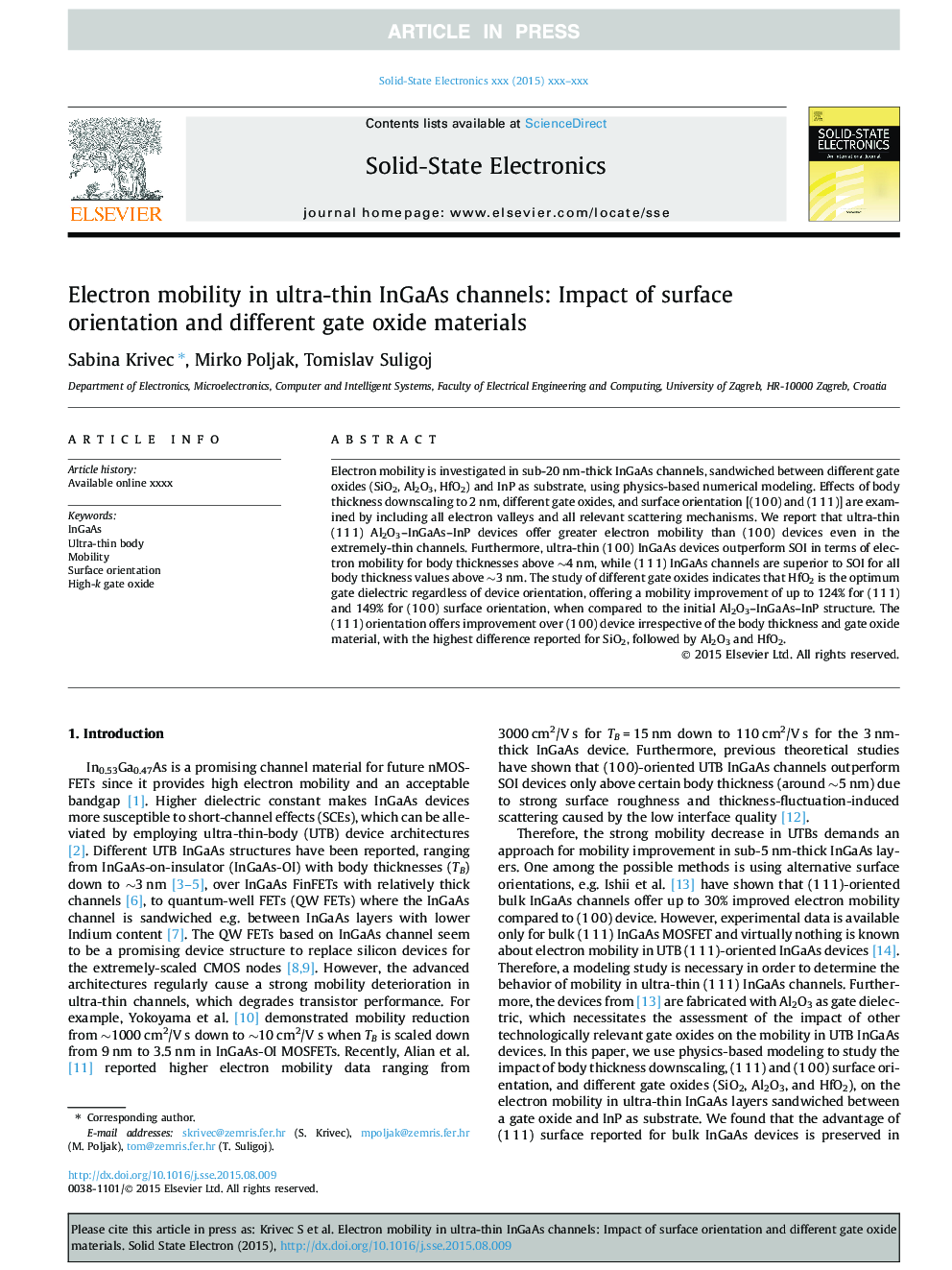| Article ID | Journal | Published Year | Pages | File Type |
|---|---|---|---|---|
| 10411587 | Solid-State Electronics | 2016 | 11 Pages |
Abstract
Electron mobility is investigated in sub-20Â nm-thick InGaAs channels, sandwiched between different gate oxides (SiO2, Al2O3, HfO2) and InP as substrate, using physics-based numerical modeling. Effects of body thickness downscaling to 2Â nm, different gate oxides, and surface orientation [(1Â 0Â 0) and (1Â 1Â 1)] are examined by including all electron valleys and all relevant scattering mechanisms. We report that ultra-thin (1Â 1Â 1) Al2O3-InGaAs-InP devices offer greater electron mobility than (1Â 0Â 0) devices even in the extremely-thin channels. Furthermore, ultra-thin (1Â 0Â 0) InGaAs devices outperform SOI in terms of electron mobility for body thicknesses above â¼4Â nm, while (1Â 1Â 1) InGaAs channels are superior to SOI for all body thickness values above â¼3Â nm. The study of different gate oxides indicates that HfO2 is the optimum gate dielectric regardless of device orientation, offering a mobility improvement of up to 124% for (1Â 1Â 1) and 149% for (1Â 0Â 0) surface orientation, when compared to the initial Al2O3-InGaAs-InP structure. The (1Â 1Â 1) orientation offers improvement over (1Â 0Â 0) device irrespective of the body thickness and gate oxide material, with the highest difference reported for SiO2, followed by Al2O3 and HfO2.
Related Topics
Physical Sciences and Engineering
Engineering
Electrical and Electronic Engineering
Authors
Sabina Krivec, Mirko Poljak, Tomislav Suligoj,
